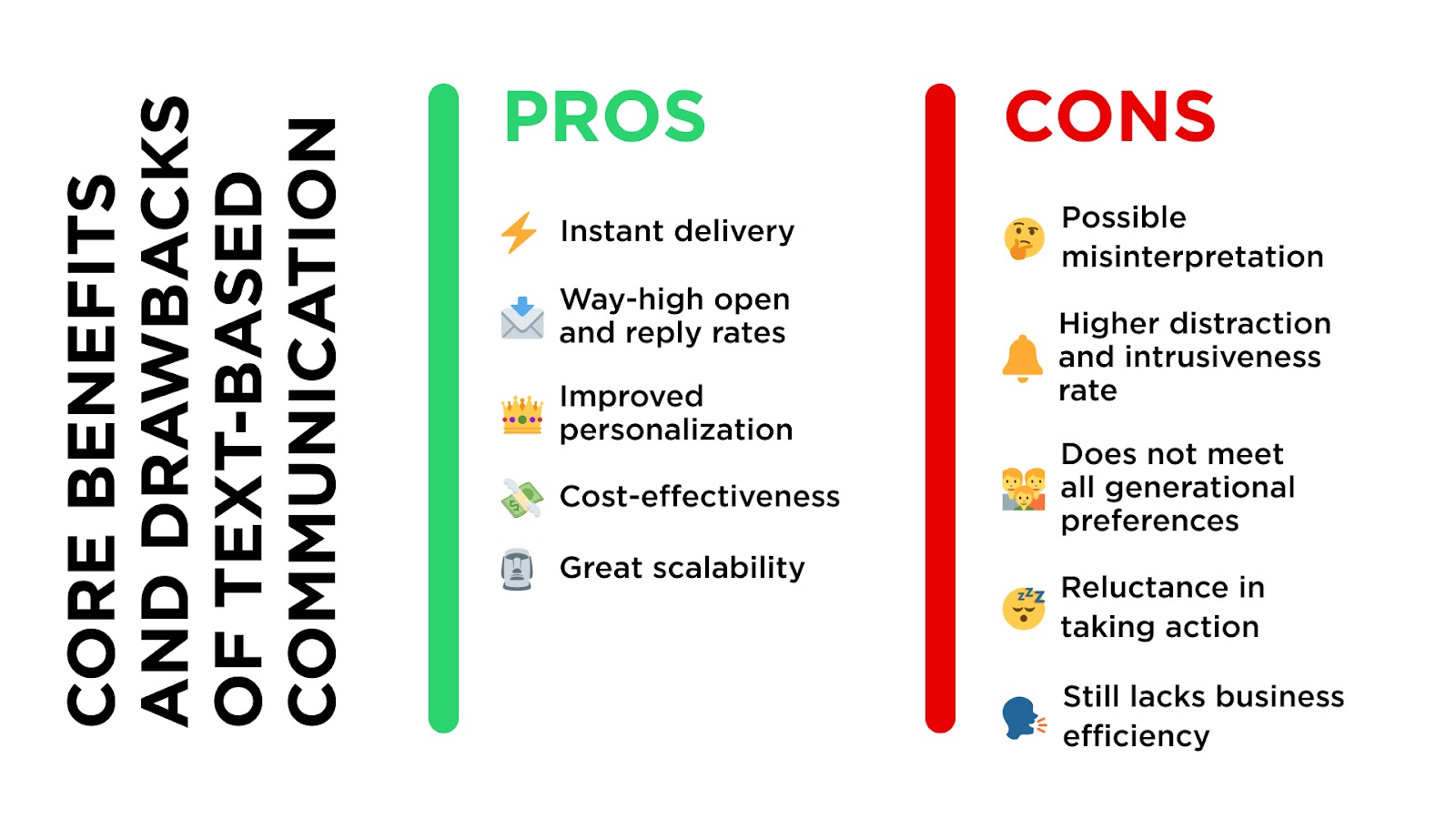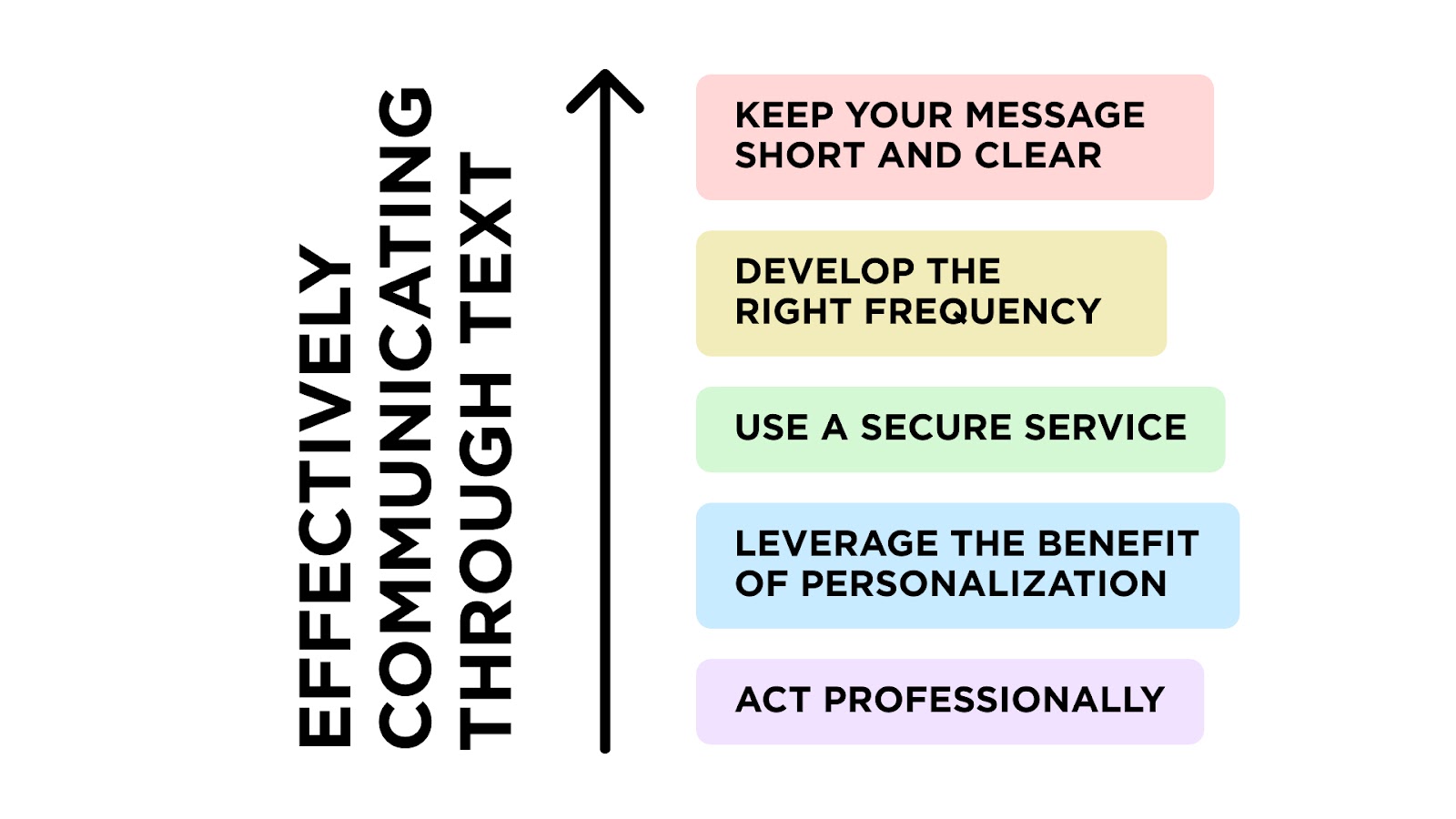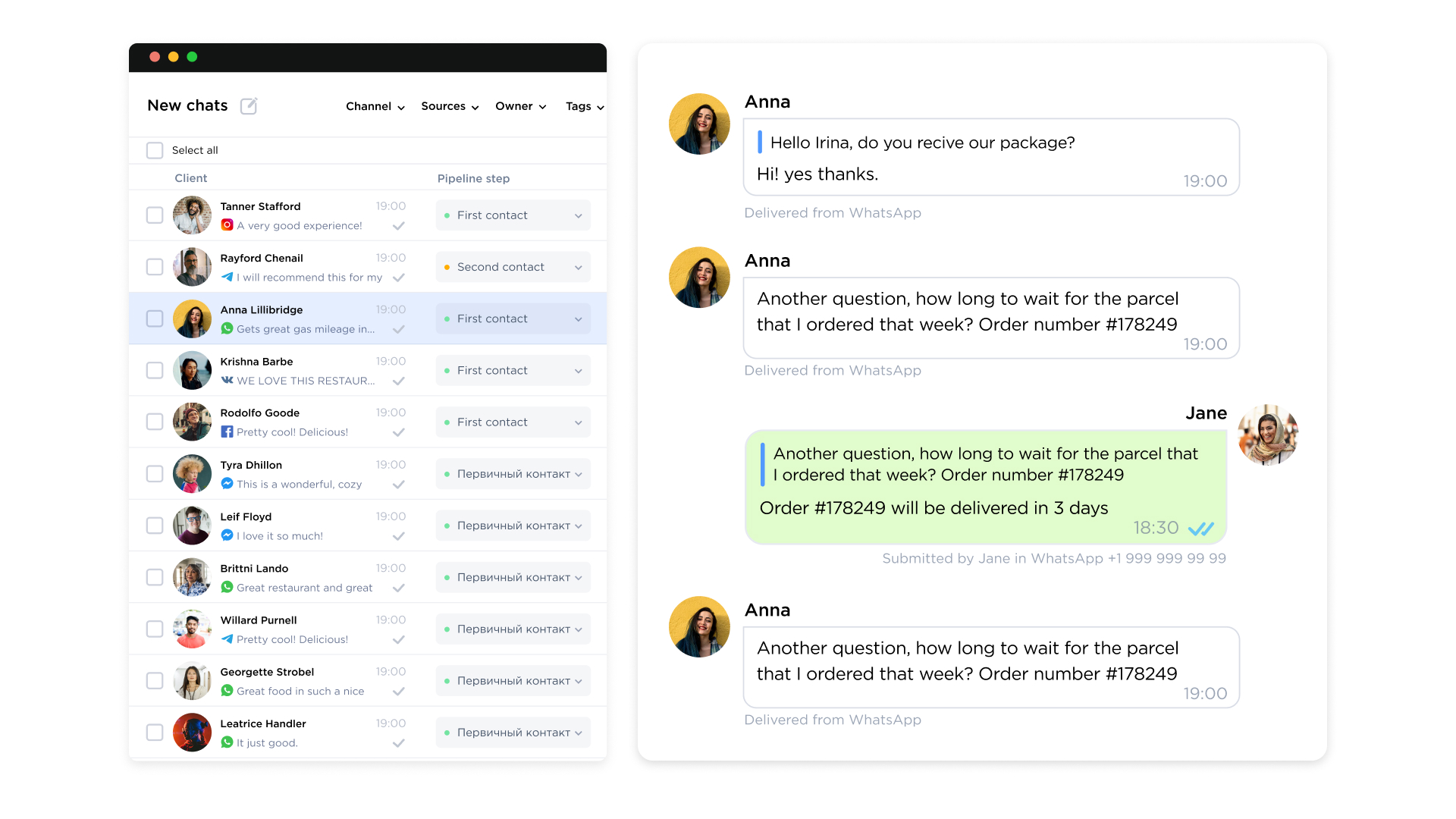How to Effectively Leverage Text-Based Communication
Analyzing pros and cons of texting and understanding how to best utilize this strategy.

Table of contents:
Nowadays, text messages have quickly become the preferred method of communication for both individuals and businesses. Gone are the days when phone calls were the primary means of staying connected. Instead, texting has become the go-to method for sending quick messages, sharing updates, and staying in touch. A great number of companies around the world have already adopted this as a more efficient way to communicate with their customers.
In what’s certainly a crazy-sounding statistic, texts boast a 98% open rate (and 45% response rate) versus a scant 2% rate for email.
In this article, I will reveal the benefits of text-based communication and provide several tips to follow while leveraging this strategy. Without further ado, let's jump right in.
What is text-based communication?
Text-based communication is a form of information exchange through text, including—but not limited to—SMS, email, and instant messages.
This is currently one of the most popular types of interaction among both people and businesses. As such, businesses now widely adopt electronic mail, short messages, social media, and instant messaging applications to hit their goals. For example, they may use text-based communication to send out messages about product updates, new services, and special offers—or to distribute valuable (and timely!) information to clients.
Why is texting an effective form of communication?
Texting itself offers several benefits that have contributed to its widespread popularity. One of the main advantages is convenience. With texting, we can communicate anytime, anywhere, without the need for immediate availability or the fear of interrupting someone. This flexibility allows us to stay connected even when face-to-face or phone conversations are not feasible.
Another benefit of texting is the ability to multitask. Unlike phone calls that require undivided attention, texting allows us to engage in other activities simultaneously. Whether it's working on a task, running errands, or even being in a noisy environment, texting enables us to communicate without disrupting our daily routines.
Additionally, texting provides a written record of conversations. This can be particularly useful in professional settings or when discussing important matters. Having a written record helps avoid misunderstandings and provides a reference point for future discussions.
Hence, text message marketing places information directly in front of viewers and catches their attention via direct notifications. By texting instead of calling, you can blast out meaningful marketing messages and help boost the chance your audience will read them.
Text messages are replied to more quickly than other forms of communication and are cost-effective to boot. Moreover, each individual at your company can answer just one phone call at once, whereas each staffer can engage in multiple text conversations simultaneously. You can also join new conversations while your first interlocutor takes time to reply.
Overall, text messages encourage clear-cut communication (as you are forced to stay on point with your message) and help boost motivation and engagement among both customers and your team.
What are some benefits and drawbacks of text-based communication?
Here are five reasons why text-based communication (through instant messengers) beats out emails and phone calls:

- Instant delivery. Your contacts receive messages instantly 99% of the time, and the majority of messages are read in under one minute.
- Way-high open and reply rates. As mentioned before, texts enjoy up to a 98% open rate and approximately 45% reply rate. Hence, you spend less time chasing down contacts and following up. In comparison to phone calls, text-based communication has much, much higher engagement rates.
- Improved personalization. First and foremost, many people perceive text messages as more conversational/relaxed and less formal than regular email—and less intrusive than phone calls. Secondly, many messages distributed via internet communication channels are accompanied by personal tags, recipient names, and other dynamically inserted details.
- Cost-effectiveness. Instant messages are one of the most cost-effective ways to convey your information. In comparison to emails, business messages are not completely free. However, if you take into account the afore-mentioned engagement rates, text-based communication can provide you with significantly greater returns at a moderate cost.
- Great scalability. With text-based communication, your team can engage more prospects or customers in less time. Moreover, you can use text messages to meet almost any business need: such as marketing and sales efforts, customer support, invoicing and payments, and 1-on-1 business communication.
Nevertheless, it’s important to understand that text messaging simply can't replace email or voice communication completely—it merely complements them. Text-based communication has some drawbacks as well. Let's take a look at some of them:
- Possible misinterpretation. Since text messages do have length limits, message interpretations may differ from your intent. In most cases, the sender is not around to clarify these intentions on the spot.
- Higher distraction and intrusiveness rate. As instant messengers distract users with multiple notifications and grab their attention on a frequent basis, this may interrupt their daily lives and/or create some irritation. To avert this problem, be sure to assess and control the timing and frequency of all outgoing communication.
- Does not meet all generational preferences. Different generations use various communication tools. While more mature clients may appreciate face-to-face or phone communication, most Millennials and Gen Z consumers would rather opt for text messages. For some business verticals, such a factor is sometimes critical.
- Reluctance in taking action. Some clients or employees may skip over email and text message requests and/or delay responses.
- Still lacks business efficiency. When compared to traditional face-to-face interactions with clients and members of your team, texts still fall short when it comes to efficiency.
Despite these aforementioned cons, many marketers and salespeople may deem instant messages the most suitable means of communication to serve their mission well.
What is a text-based communication strategy?
A text-based communication strategy is the plan of action a business uses to send the right message to the right audience through a text-based medium at the right time in order to achieve a business objective. The most popular text-based media employed by businesses include:
- Instant messages (WhatsApp, WeChat, Telegram, etc.)
- Direct social media communication tools (Facebook Messenger, Instagram Direct, etc.)
- Short Message Service (SMS)
- Electronic mail (Email)
Examples of business goals you can achieve with messengers and emails include:
- Informing your audience
- Influencing your audience by inspiring further action
- Building relationships with your audience
- Obtaining feedback and learning from your audience
- Promoting several products and services
- So much more!
A text-based communication campaign involves crafting a list of contacts who would appreciate receiving communications from your business. Hence, before you begin texting with your audience, you must first get their permission to receive text messages from your brand.
Now, let’s learn how to effectively leverage text communication to transfer your thoughts and ideas to a broad audience.
How to communicate better via text?
Follow these best practices to effectively communicate through text and leverage text message platforms as part of your marketing efforts.

- Keep your message short and clear. The length of your text matters, so say something meaningful and keep your audience engaged.
- Develop the right frequency. Keep in mind that messages (notifications) disturb people, so it’s essential to avoid over-messaging SMS and instant messenger recipients. Consider sending no more than two promotional messages a week. Moreover, it’s important to only send this communication between the hours of 8:00am and 9:00pm (per the time zone(s) where your recipients live).
- Use a secure service. A secure messaging service provides greater privacy protection over standard phone-to-phone text messages. Many text-based communication platforms—such as Umnico—also allow for high-level encryption and security to ensure messages are safe. Umnico also enables you to easily view your contacts and text message history in one window, making it easier to find and message clients.
- Leverage the benefit of personalization. Consider your target audience when developing your text marketing content, addressing their individual needs and calling them by name when appropriate.
- Act professionally. To keep your messages simple yet comprehensive, never use shorthand, utilize caps and emojis appropriately, and ALWAYS proofread your message.
By following these best practices, we can enhance the effectiveness of texting as a communication tool and minimize the potential drawbacks.
How to use text-based communication to improve your performance?
Instant messengers and SMS can improve your work performance since you can employ these mediums simultaneously and less involvement is required to process incoming requests. For example, you are free to copy and paste text or use templates when answering frequently asking questions. Moreover, automation is possible for text-based communication—saving you and your customers a ton of time. For instance, chatbots can reply to client requests with suitable information based on keywords. When a client sends an inquiry about office working hours, appointments, or invoices, he or she can receive an instant reply from a bot—meaning your customers must no longer wait for a response and your staff is not required to reply on a manual basis.
Furthermore, you can plan and schedule text messages to deliver information to your recipients only when they need it or at the right time. For example, your sales staff can spend a few hours at the beginning of the week scheduling all of your appointment reminders and in turn stay focused on closing deals instead of reaching prospects through manual calls.
Want to know the best part? You can systematize and unite all text-based communication within one service, effectively using an all-in-one messenger so there’s no need to switch between several instant messages, social media, and other communication channels.
How to work with all messengers under one platform?
Text-based communication is a valuable investment, as these channels can help you build trust and engage your audience both professionally and effectively. Nevertheless, it’s sometimes challenging (and frustrating!) to operate various email accounts, SMS, multiple social media accounts, and instant messengers separately—causing you to miss an important inquiry from one of your best customers or your boss when shifting between messaging applications on your smartphone, for example.
To improve text-based business communication, omnichannel messaging platform Umnico allows users to utilize messengers, email, and other 25+ text-based communication channels all in one window. To take advantage of this service, you can first set up all necessary platforms—such as WhatsApp, Facebook Messenger, or Telegram—without the need to involve IT professionals. What’s more, Umnico offers a customizable sales funnel so you can convert dialogues with your clients into deals. Templates and hotkeys? They allow you to process inquiries at a greater velocity and boost retention rates among your customers.

If you manage a team, you will also appreciate incoming message analytics provided by Umnico—allowing you to monitor the quality of work executed by your employees.
Without wasting any time, I encourage you to sign up for a free trial to learn what omnichannel messaging can do for your business.
What’s the bottom line?
Texting has revolutionized the way we communicate, offering convenience, flexibility, and the ability to multitask. Text-based communication is a win-win for both businesses and consumers. Over the next few years, text messages may in fact grow into one of the most effective strategies to reach clients and drive incremental sales. For individuals, messengers help get things done and supply them with direct content while they’re on the go.
Now that you know the benefits of this popular type of communication, are you ready to start texting your contacts and customers?
Feel free to launch your new marketing efforts with Umnico Live Chat: our chat widget that allows you to communicate with your website visitors in a highly efficient manner. Free of charge, it takes mere minutes to install.

Subscribe to Umnico news!
Be the first to get recommendations and up-to-date information
